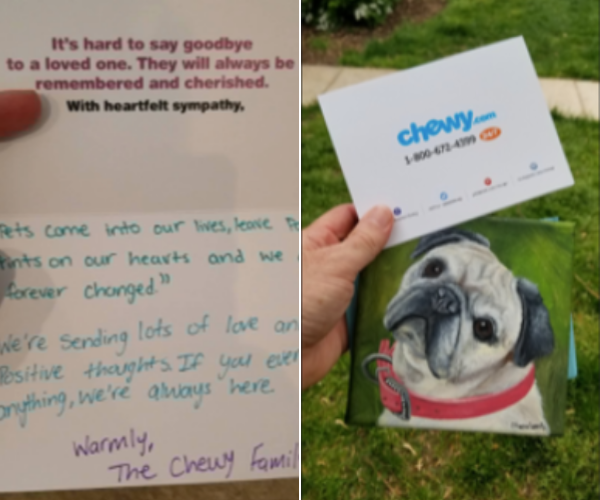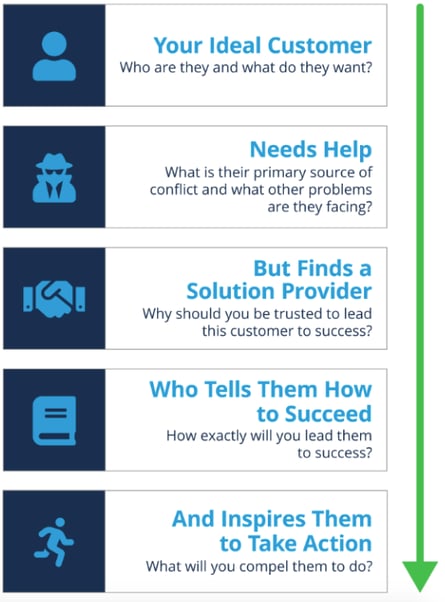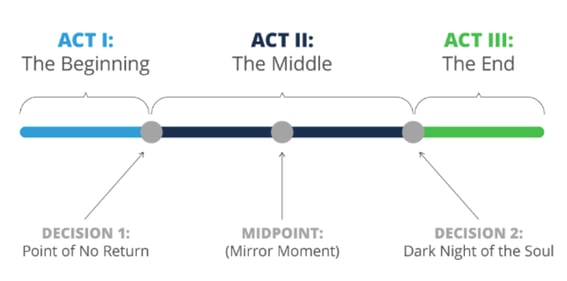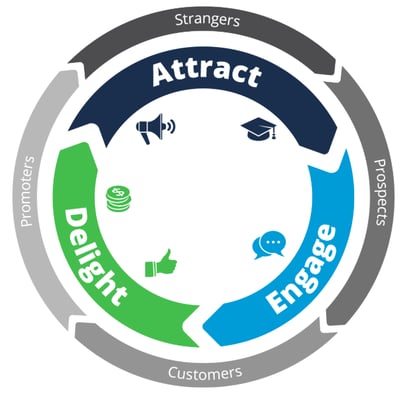Share this
Top Marketing Trends Driving Customer Experience in 2020
by Chris Peer on Fri, Nov 15, 2019 @ 03:01
Interested in finding out how to distance yourself from your competitors? Studies show that companies who prioritize customer experience are outperforming the competition.
A recent study by Gartner reveals that over 80% of organizations expect to compete mainly based on customer experience.
So why is customer experience so important?
Buyers continue to evolve. The lines between sales, marketing and customer service have disappeared. Customers won’t distinguish between the marketing department, the customer service team or the sales department. Any contact they make with your organization is part of their experience with the brand as a whole.
Today’s customers have heightened expectations for companies they choose to interact with. The question now becomes: How can their entire experience—from being courted as a prospect to being onboarded as a new customer to being delighted as an existing customer—align with your brand and their evolving expectations?
We recently hosted a webinar presented by Mike McDonald, EVP of sales and marketing at SyncShow, Greg Lukach, content strategy manager at SyncShow, and Jasz Rae Joseph, senior associate, account manager at SyncShow. They discussed the top three marketing trends driving customer experience in 2020. Here is a recap of the webinar presentation.
1. Building Trust
Moving into 2020, trust is more important than ever. Users are worried about their data—and they are not going to give it to just anyone. People want to do business with people they trust.
Your company’s website is your storefront. If the awning is tattered, the “O” on your “OPEN” sign is burnt out and your front stoop is dusty, then potential customers are going to keep right on walking to the next establishment. Building trust from a digital perspective is more important than ever. Here are just a few ways you can look trustworthy online:
- Utilize off-site SEO. Off-site SEO has to do with other relevant websites linking to your website. One way to show that you are trustworthy is to have large industry publications write about your work and link back to your website. Along with building trust, it also helps boost your SEO.
- Does your site look trustworthy? Having a secure site is important, especially if you are collecting information such as credit cards or even email addresses from your prospects. An unsecured website can deter your visitors. Additionally, if your site is outdated or broken, this can steer visitors away too.
- Include trust symbols on your website. Trust symbols help alleviate many of the fears visitors may have about doing business with you. Some trust symbols you can use on your website to build confidence in your brand include written and video testimonials, industry associations and awards/certifications.
Real-Life Example of Building Trust: Chewy.com
- A dog owner lost his pet and he emailed Chewy asking if he could return an unopened bag of food.
- Instead of Chewy just accepting his return, they told him to donate it to a local shelter. They returned his money, and even better, they sent him a handwritten sympathy card and a painted photo of his beloved dog.

We consider Chewy.com an experience disruptor. Even though Chewy.com is a B2C organization, this is still relevant in the B2B space. Why? Because once your expectations are set very high, it’s hard to lower them. Buyers begin to expect those experiences in every interaction they have with a business.
2. Storytelling
I know what you might be thinking—"storytelling has been around for over 35,000 years, how is this a new trend?"
Well, it is something that marketers are now talking a lot about. At the INBOUND conference this year, Greg Lukach, our content strategy manager, learned about how storytelling can be used to make marketing efforts that much more effective.
Gabriela Pereira, the founder of DIY MFA, a company that offers a do-it-yourself alternative to receiving a Master's degree in writing, spoke about this topic at INBOUND.
Gabriela says storytelling and marketing go together for several reasons:
- A transactional experience happens with storytelling. It demands a back and forth, a natural give and take.
- Stories deepen established relationships.
- They bridge the gap between people of differing world views—through the sharing of stories, we learn about one another.
- There's a biological response in your brain when it hears a story—so there's a biological response to engagement that's proven by research.
So, why storytelling right now?
According to Gabriela, there's a lot of research that's happening right now in psychology and neuroscience that's discovering the impact that storytelling has on how our brains function and how storytelling creates empathy.
Donald Miller, author of the book "Building a StoryBrand," lays out a framework for how to build a simple script that tells your brand's story in a compelling way that will resonate with your ideal customers. The release of this book got a lot of people and marketers talking about storytelling.
This takes us to the next logical question—how can we use storytelling in marketing?
In the context of marketing, we can use storytelling to build out buyers’ journeys that customers and prospects actually want to go on. You can use storytelling to entice prospects, convert them into customers and then get those customers to become brand evangelists.
There are multiple frameworks people are now using to organize information and create content plans that incorporate stories.
Here are some of those frameworks:
1. The Story Script

Donald Miller pioneered this framework. What this framework does is help you keep your brand messaging on point. The idea is to create a simple script that will keep prospects and customers engaged with your message and reduce any friction caused by lack of clarity.
Read more about the story script here.
2. Three-Act Story Structure

This is the framework that Gabriela Pereira talked about at INBOUND. Gabriela created this framework after doing a lot of research, which she noted many parallels between a traditional story structure and a buyer's journey.
Unlike the story script framework, which is one simple script that you would build content pieces around to craft buyers’ journeys, this framework can be applied to create very specific buyers’ journeys.
Read more about the three-act story structure here.
3. The Flywheel Framework
The flywheel framework is essentially a different way of looking at what was once referred to as a buyer's funnel. The funnel included the attract and engage stages of a buyer's journey.
With the flywheel, you create buyers’ journeys that also focus on what happens post conversion—so, it makes you question what you're going to do to continue to nurture prospects and customers.

Here are the three stages of the flywheel:
- In the attract stage, you create content that entices these individuals to research solutions to their common problems and introduce them to your solutions.
For example, you could create campaigns that address common pain points. These attract tactics could include social posts that drive to on-site videos and other content that expands upon those ideas. - In the engage stage, you provide content that helps prospects clearly identify which solutions will best solve their problems and push them toward further engagement.
Some of the tactics you could use in this stage or this part of the story you're telling are pop-up calls-to-action (CTAs), chatbots, CTAs that drive people to sign up for newsletters and landing pages to download various kinds of offers. - In the delight stage, you encourage individuals who have engaged with you to interact further and find potential solutions to the other problems they may be having. The goal here is to create promoters or evangelists out of customers.
Email drip campaigns and newsletters are delight tactics; they can continue to nurture customers with other opportunities and provide value so that customers want to start the cycle all over again.
4. The Playground
And, finally, we have the fourth framework—the playground. Ashley Faus, senior manager of integrated strategy, spoke about this at INBOUND. During this session, she talked about the importance of building content for each stage of this new “playground” journey so that customers have something to engage with even if they enter the “wrong way.”
Marketers are starting to use the playground analogy because, like on playgrounds, users or buyers don't take linear paths, even if you create them. Also, even when you have these pieces for people to interact with—various forms, offers and videos—they are going to consume them in the “wrong” order, just as people climb up slides.

Moreover, here are some things to keep in mind for creating content that provides your customers with the best experiences possible.
- Integrate compassion and emotion: As noted before, you can do this by showing empathy. Show a human side to your business. You can write casually, yet professionally, and create videos that speak to people's worries, needs and aspirations.
- Remove friction: Basically, people don't want to work too hard for anything. If they don't immediately understand the value of something, they'll move on. Eliminate confusion at every stage and be clear and direct in all communication.
- Break your story into small, manageable pieces: People want to engage with you how they want to engage. They want simple stories that they don't need to work too hard to understand.
- Give buyers options: While your story should be simple to understand and without friction, people like choosing their own adventures.
- Talk to buyers right now: The number one source of friction in a buying experience is time, which is why people love live chat and chatbots.
- Content quality should be greater for your customers than for your prospects: Basically, stop putting all of your resources into acquiring new customers.
- Empower customers to do it themselves: Customers like learning from other customers. According to HubSpot, 75% of the questions posed on their website in 2018 came from customers seeking help from other customers. A FAQ page is an easy way to start to do this.
- Experience what your buyers experience: Focus on the communication you receive and the disconnects you're having with the experience overall. Is it natural? Does it make sense?
3. Aligning Sales & Marketing
Customers and prospects want to be lead, and they’re looking for you to do the leading. They have needs, both internal and external, that they’re looking to address and they’re looking for your expertise to solve them. Enter one unified revenue team comprised of marketing and sales experts to the rescue. Leading organizations have shifted the paradigm from two siloed departments with little collaboration to the concept of a revenue team owning different stages of the buyers journey.
Before making this important shift, it’s important to understand the current obstacles in place that keep marketing and sales disjointed:
- Nuance by industry or culture.
- Lack of resources devoted to marketing.
- Lack of shared goals and strategies.
- Reporting structure and compensation.
If any of these scenarios resonate with your organization, don’t despair. Marketing and sales will always have different roles, but aligning those roles toward common goals isn’t as difficult as it sounds. Once you’re able to shift the paradigm, you start to see efficiencies and goals attained at a greater scale.
While there’s a lot that goes into aligning marketing and sales into one revenue team, below are a few ways you can get started:
- Identify the common goal (the linchpin)—this could be revenue growth, new client acquisition, client retention, conference attendance, etc.
- Get in a room and talk about mutual strategies and who owns what.
- Put measurements in place so people know what they’re accountable for.
- Communicate! Formally through shared meetings, and informally one-on-one.
- Celebrate wins!
To Wrap Up
2020 will be a significant year for customer experience. As competition rises due to new entrants in the marketplace, it will be important to understand what matters most to today's buyer.
Here is a recap of the top trends:
- Building trust continues its climb in 2020.
- Storytelling is the future of marketing.
- Sales, marketing and customer service are one revenue team.
WEBINAR: The Top Marketing Trends Driving Customer Experience in 2020
Watch the webinar presentation and Q&A session below:
Share this
- Inbound Marketing (125)
- Manufacturing (82)
- Lead Generation (71)
- Website Design & Development (47)
- Social Media (46)
- Online Brand Strategy (38)
- B2B Marketing (37)
- eCommerce (32)
- Digital Marketing (30)
- Expert Knowledge (30)
- Company Culture (22)
- Content Marketing (17)
- Metrics & ROI (16)
- Customer Experience (15)
- Search Engine Optimization (15)
- Marketing and Sales Alignment (13)
- Transportation and Logistics (11)
- Content Marketing Strategy (9)
- Email Marketing (9)
- SyncShow (9)
- Digital Content Marketing (8)
- Digital Sales (8)
- General (8)
- Lead Nurturing (8)
- Mobile (7)
- Brand Awareness (6)
- Industrial Marketing (5)
- Digital Marketing Data (4)
- Transportation Insights (4)
- Video Marketing (4)
- HubSpot (3)
- LinkedIn (3)
- Marketing Strategy (3)
- Professional Services (3)
- Account-Based Marketing (2)
- Demand Generation (2)
- High Performing Teams (2)
- Marketing Automation (2)
- News (2)
- PPC (2)
- SEO (2)
- SSI Delivers (2)
- Synchronized Inbound (2)
- Value Proposition (2)
- Artificial Intelligence (1)
- Budgeting (1)
- Facebook (1)
- In-House Vs. Outsourced Marketing (1)
- Instagram (1)
- KPI (1)
- Logistics (1)
- Marketing Trends (1)
- Networking (1)
- Paid Media (1)
- Portfolio Strategy (1)
- Private Equity (1)
- Retargeting (1)
- Revenue Growth (1)
- StoryBrand (1)
- Storytelling (1)
- Tech Stack (1)
- December 2025 (1)
- November 2025 (3)
- October 2025 (2)
- August 2025 (2)
- July 2025 (1)
- May 2025 (2)
- March 2025 (1)
- January 2025 (4)
- December 2024 (2)
- November 2024 (4)
- October 2024 (4)
- September 2024 (4)
- August 2024 (4)
- July 2024 (1)
- June 2024 (1)
- May 2024 (4)
- April 2024 (1)
- March 2024 (3)
- January 2024 (2)
- December 2023 (4)
- November 2023 (3)
- October 2023 (1)
- September 2023 (4)
- August 2023 (3)
- July 2023 (2)
- June 2023 (2)
- August 2022 (2)
- July 2022 (2)
- June 2022 (1)
- March 2022 (2)
- February 2022 (1)
- January 2022 (2)
- October 2021 (1)
- June 2021 (1)
- May 2021 (1)
- March 2021 (1)
- December 2020 (1)
- October 2020 (2)
- September 2020 (1)
- August 2020 (3)
- July 2020 (3)
- June 2020 (4)
- May 2020 (2)
- April 2020 (3)
- March 2020 (9)
- February 2020 (5)
- January 2020 (6)
- December 2019 (5)
- November 2019 (7)
- October 2019 (6)
- September 2019 (8)
- August 2019 (5)
- July 2019 (5)
- June 2019 (3)
- May 2019 (2)
- April 2019 (1)
- March 2019 (2)
- February 2019 (1)
- January 2019 (2)
- November 2018 (1)
- October 2018 (1)
- September 2018 (1)
- August 2018 (1)
- May 2018 (2)
- March 2018 (1)
- November 2017 (1)
- October 2017 (1)
- September 2017 (1)
- August 2017 (2)
- July 2017 (2)
- May 2017 (1)
- April 2017 (1)
- February 2017 (1)
- January 2017 (1)
- December 2016 (1)
- November 2016 (8)
- October 2016 (7)
- September 2016 (2)
- August 2016 (2)
- July 2016 (6)
- June 2016 (3)
- May 2016 (4)
- April 2016 (6)
- March 2016 (6)
- February 2016 (7)
- January 2016 (7)
- December 2015 (6)
- November 2015 (2)
- October 2015 (3)
- September 2015 (2)
- August 2015 (4)
- July 2015 (9)
- June 2015 (9)
- May 2015 (8)
- April 2015 (8)
- March 2015 (9)
- February 2015 (7)
- January 2015 (8)
- December 2014 (7)
- November 2014 (7)
- October 2014 (5)
- September 2014 (4)
- August 2014 (4)
- July 2014 (4)
- June 2014 (4)
- May 2014 (5)
- April 2014 (4)
- March 2014 (7)
- February 2014 (9)
- January 2014 (7)
- August 2013 (2)
- July 2013 (4)
- June 2013 (6)
- May 2013 (7)
- April 2013 (7)
- March 2013 (5)
- February 2013 (5)
- January 2013 (7)
- December 2012 (4)
- November 2012 (3)
- October 2012 (2)
- September 2012 (1)
- July 2012 (1)
- April 2012 (3)
- March 2012 (5)
- February 2012 (2)
- January 2012 (1)
- November 2011 (1)
- May 2011 (3)
- April 2011 (1)
- December 2010 (2)
- November 2010 (2)
- August 2010 (1)
- May 2010 (2)
- April 2010 (1)
- January 2010 (1)




